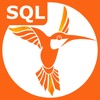Optimizing Performance in SQL Server Salesforce Integrations
When referring to performance as such, it’s first necessary to outline metrics defining its efficiency. Based on the concrete parameters, one can assess whether the performance is sufficient or should be optimized. As for the Salesforce connect SQL Server, the performance usually depends on speed, querying, and connection reliability.
This article aims to discover the metrics influencing SQL Server and Salesforce integration performance in detail. It also provides hints on how to optimize and improve it. These strategies can help organizations enhance data transfer speed, reduce latency, and improve overall system performance.
Understanding Factors Influencing Performance of the SQL Server Salesforce Integration
The connection between two services established for the purpose of data exchange makes a part of the data integration pipeline. There are multiple things that can impact this channel, starting from magnetic storms to human error. However, we’d be more specific and provide the concrete factors that have the greatest impact on the success of data exchange between SQL Server and Salesforce.
- Data volume. Large datasets usually impact the data transfer speed and slow down the integration process significantly.
- Query efficiency. Queries with suboptimal joins, for instance, tend to influence the data retrieval and processing times. The same goes for the lack of appropriate indexing or query optimization.
- Data transformations. Extensive data transformations, like format conversions or calculations, are usually associated with additional processing time.
- Security measures. Encryption protocols, authentication mechanisms, and compliance requirements can introduce overhead that affects integration performance.
- Concurrency and scalability. High levels of concurrent integration processes or scalability issues can strain system resources.
Properly addressing these factors through tuning and resource allocation can improve the overall performance of the SQL Server and Salesforce integration. The following sections describe each of these factors and explain how to elaborate on them for performance optimization.
Data Modeling and Mapping
As we’ve mentioned above, the volume of data that needs to be transferred from SQL Server to Salesforce or vice versa, impacts the integration speed and performance. It’s possible to address it by designing so-called data models and schemes. They help to visualize the data flows and specify which exact data and when should be loaded from one source to another.
Data modeling is an essential step as it allows users to split huge amounts of information into chunks. Also, it helps to understand how often each chuck should be updated or whether it should be sent only once from one system to another. These approaches help to optimize the data flows and adapt them to integration capabilities of the system.
Query Optimization on SQL Server Data Extraction
Those who deal with databases, such as SQL Server, most likely know that each query has its cost. It’s determined by the time needed for the query to address the database and return the result. The number of disk accesses, read and write operations, the number of records on the page, and some others are among the critical factors influencing the cost and performance of each query.
In order to improve the query efficiency, and thus the time of data retrieval, it’s necessary to adopt certain strategies. The most frequently used and effective ones in SQL Server include but are not limited to:
- The use of indexes.
- Filtering and selective fetching.
- Reduction of subqueries.
- Partitioning and sharding.
- Database tables normalization.
Data Transformations
When transferring data from one SQL Server to Salesforce, data mapping and transformations are usually invoiced. Such procedures are required to match the data types and structures of one system to those of another. However, data transformations might sometimes be complex and thus take many resources and time for integration.
In order to simplify and optimize data transfer at this stage, the use of third-party data integration tools, such as Skyvia, would be a great plus. Skyvia provides powerful data transformations that can be configured in the visual wizard when setting up the integration between Salesforce and SQL Server.
Connection Management between Salesforce and SQL Server
Integration between these services needs some kind of connection established beforehand. There are several approaches available and you may select the one that matches your specific requirements and constraints. Here are several ideas on how you establish and manage a connection between Salesforce and SQL Server:
- Use Salesforce Connect. It allows you to access data from external sources, including SQL Server, directly within Salesforce. In this case, you don’t have to physically move data into Salesforce.
- Use data integration tools. Such services as Skyvia, Talend, Information, and other similar solutions are specifically designed to move data between Salesforce and SQL Server with no coding. They allow you to schedule jobs to extract data from Salesforce, transform it as necessary, and load it into your SQL Server database, and vice versa.
- Custom integration. You may develop custom integration solutions using programming languages such as Java, Python, etc.
- ODBC driver. For instance, you may use a Devart ODBC Driver for SQL Server – a high-performance data connector with enterprise-level features for accessing SQL Server databases from ODBC-compliant tools, including Salesforce, on 32-bit and 64-bit Windows, macOS, and Linux.
Concurrency and Scalability
Another important aspect that impacts the speed and performance of the Salesforce SQL Server integration is the number of concurrent integrations. If you are using a third-party integration tool that runs several integration packages at the same time, this may slow the entire data transfer process.
Wrapping Up
The efficiency of the data exchange between SQL Server and Salesforce services depends on various factors. This includes data volume, frequency of data transfers, queries used, data transformations applied, network latency, and the chosen integration approach.
If you note that the efficiency of the integration isn’t as expected you have to perform a series of diagnostics and audit procedures. This refers to the query optimization, data modeling, connection management, transformations overview, and some others.
Related Apps
Latest News
- Optimizing Performance in SQL Server Salesforce Integrations
- A Comprehensive guide to the game Zombie Catchers
- Downloading Zombie Catchers Mod APK without jailbreak
- Optimizing game strategy with the codes for Zombie Catchers
- 10 Ways to Make Money with Your 3D Printer! [2024 Guide]
- Basic tools for optimizing a dating site






